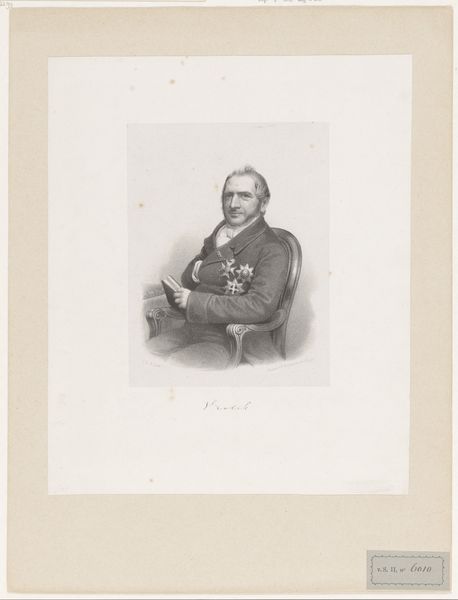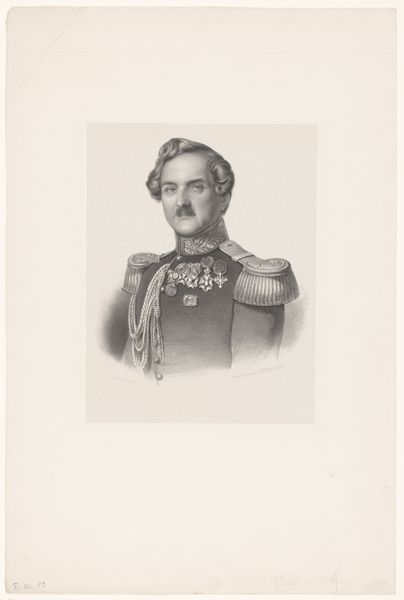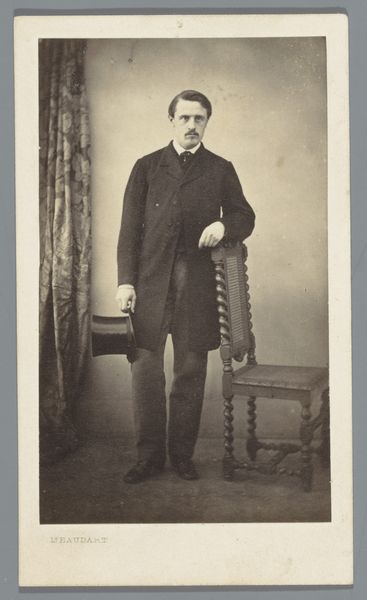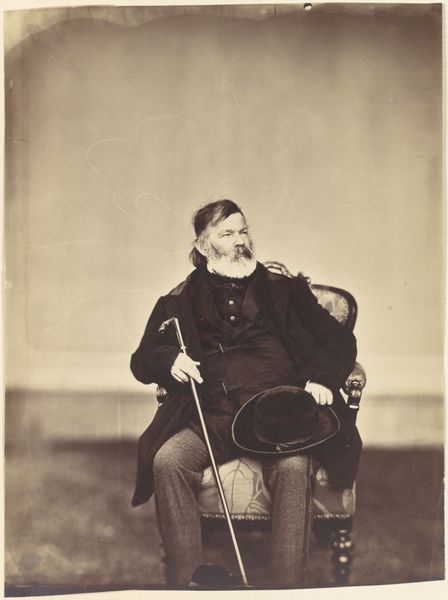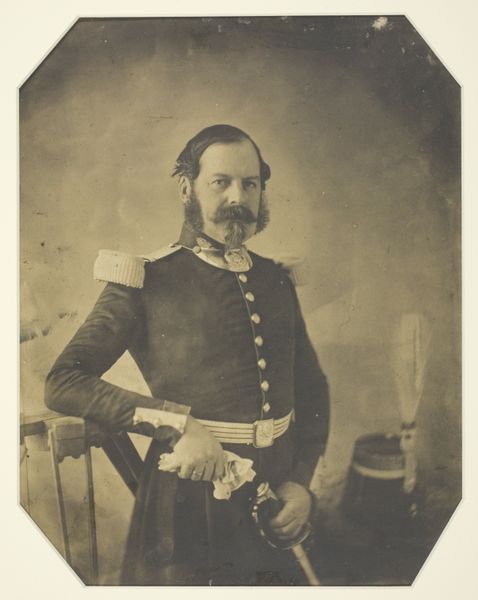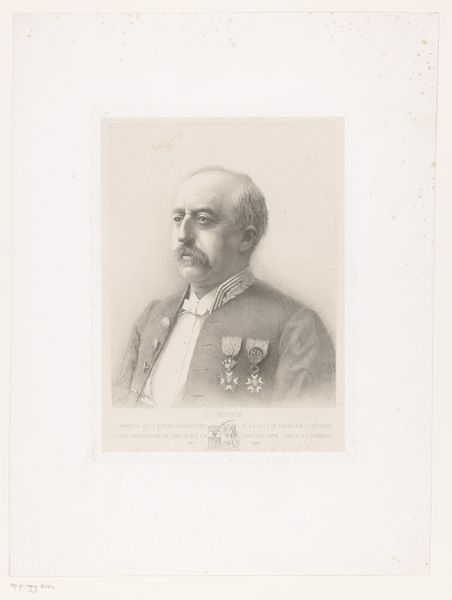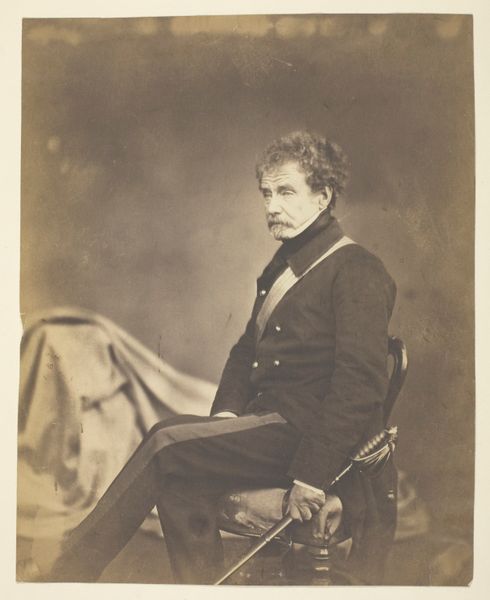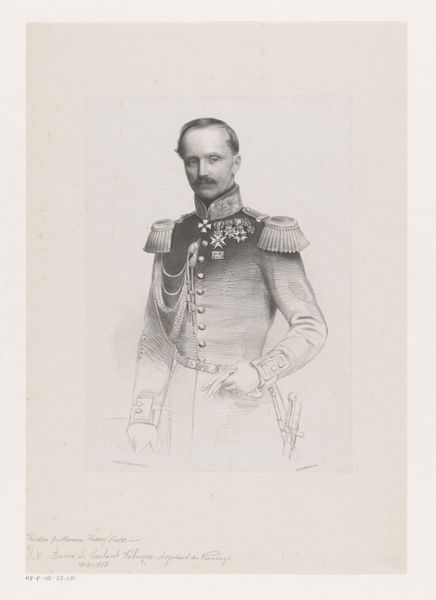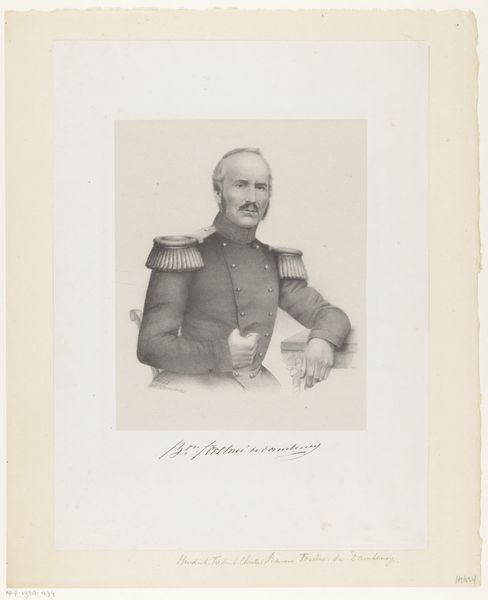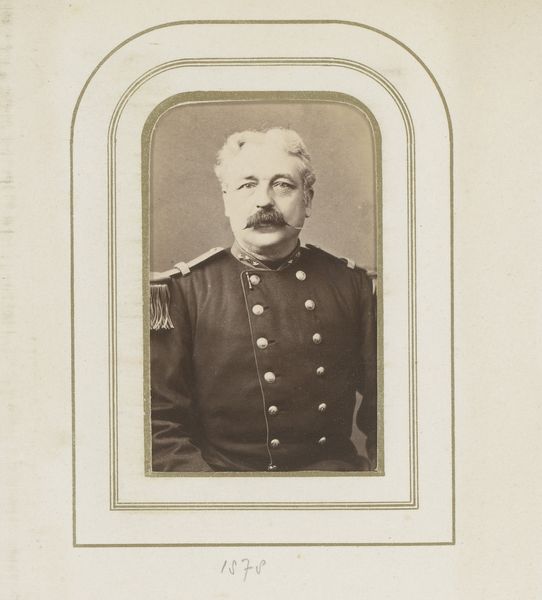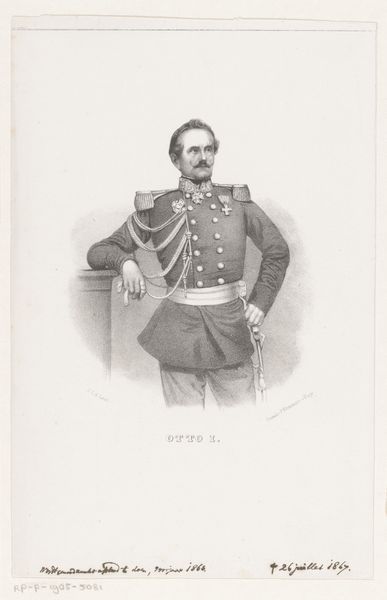
print, daguerreotype, paper, photography
#
portrait
#
16_19th-century
# print
#
war
#
daguerreotype
#
paper
#
archive photography
#
photography
#
historical photography
#
england
Dimensions: 20 × 15 cm (image/paper); 58.9 × 42.5 cm (mount)
Copyright: Public Domain
Editor: This is Roger Fenton's "Marshal Pélissier," a photograph from 1855 currently held at The Art Institute of Chicago. It's quite striking; the stern face and elaborate uniform against what looks like a fairly simple backdrop. What draws your eye in this piece? Curator: I immediately think of the daguerreotype process itself, its materiality. Look at the way Fenton carefully manipulated light and exposure to capture Pélissier’s likeness and rank. This wasn’t just documentation; it was constructing an image of power using the latest technology. How does the act of photographic image-making at that time influence its cultural significance, particularly considering photography's relationship to portraiture and aristocratic power? Editor: I see what you mean. Knowing this was an early photograph, the fact that he's sitting suggests there may have been a long exposure time to cope with? The print's aged appearance also speaks to its materiality and time as a factor in its social context and worth. Curator: Exactly! Think about the economic investment: chemicals, equipment, the photographer’s fee. Who had access to this technology? Whose stories were being told through it? This photograph is as much about class and representation as it is about Pélissier himself and his military service, right? Early photography elevated the wealthy but simultaneously had origins rooted in commoners depicting other commoners or ordinary subject matter, didn't it? Editor: It makes you think about who controls the means of image production then and now. What's deemed worthy of capturing in photographic format? Curator: Precisely. Photography, especially then, was a form of material power. Analyzing the medium helps reveal the broader social and economic forces at play. Editor: I'll never see an old photograph the same way again. It’s less about just the person in the image and more about what was needed to make that image! Curator: And how those decisions about process and material informed how we understand history.
Comments
No comments
Be the first to comment and join the conversation on the ultimate creative platform.

